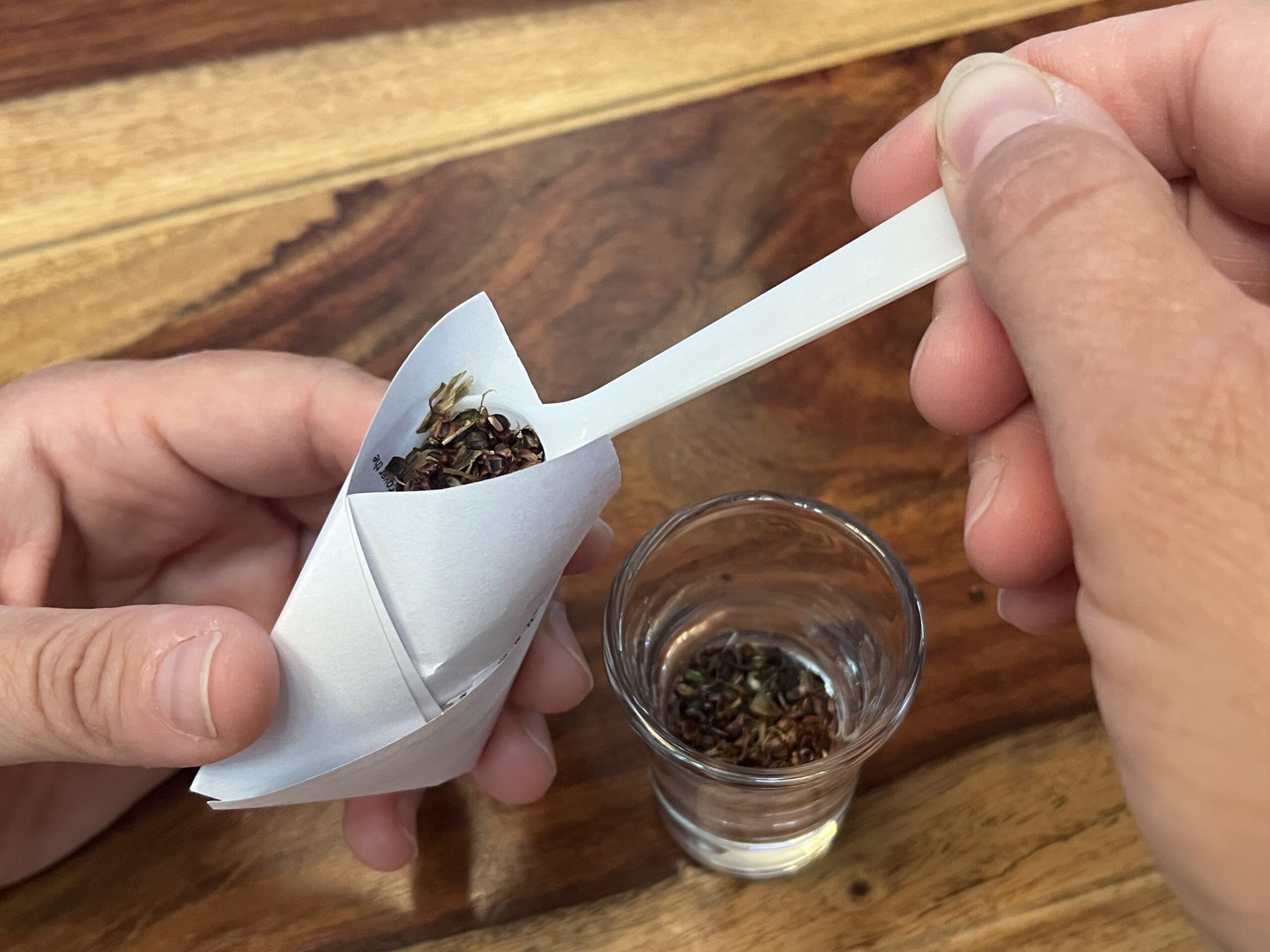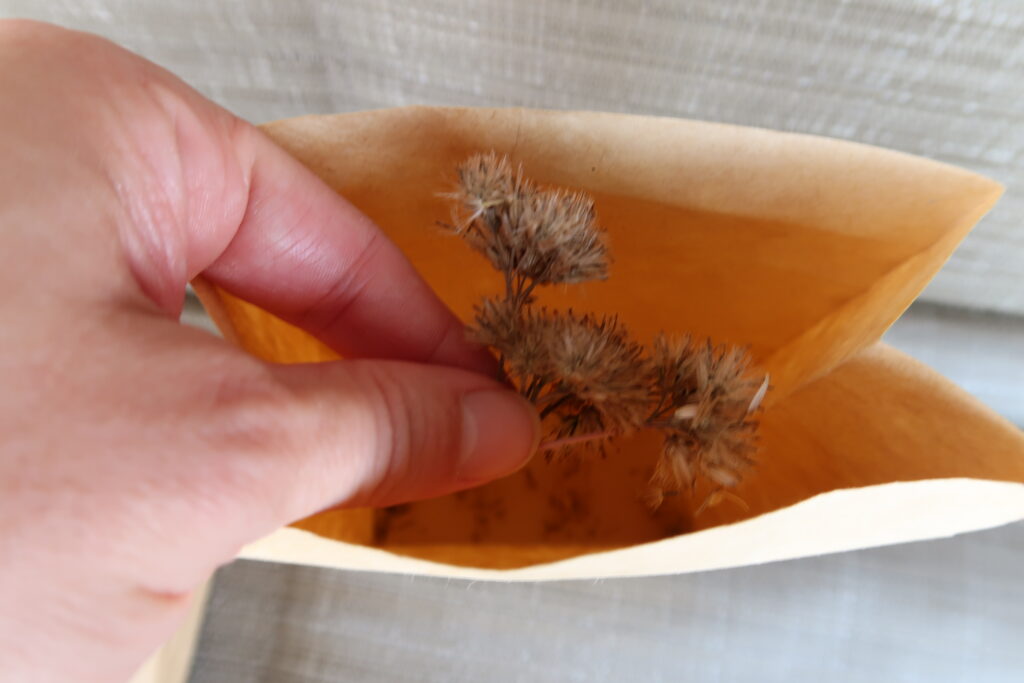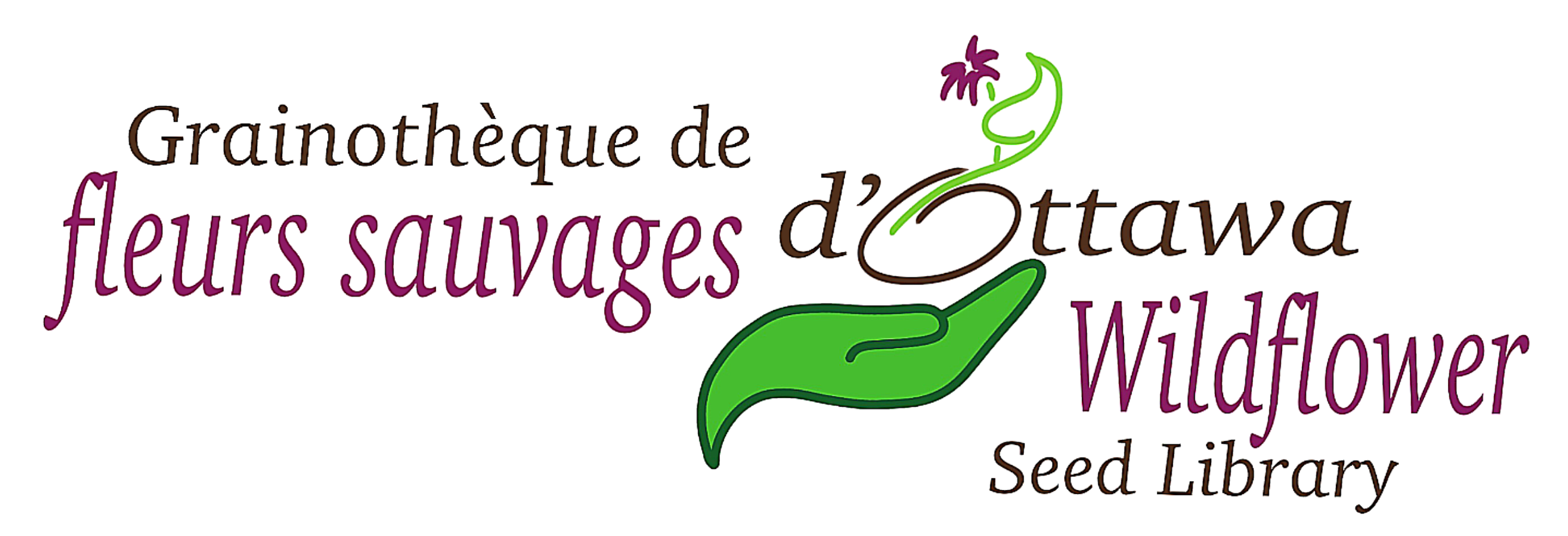Each fall, the Ottawa Wildflower Seed Library hosts a series of free native seed giveaways. The seeds that are given away at these events are donated to the library by community members who have collected them from their own gardens, reflecting the library’s values of reciprocity.
You can donate seeds to the library at any of our events throughout the year or they can be dropped off at locations across the city.
Find information below for collecting and donating seeds to the library. This spreadsheet will be your guide for determining what seeds you can donate, how to harvest them, and how to package and label them for donation.
*The library only accepts fresh seeds. For example, we are currently only accepting seeds harvested in 2024.
**If you live outside of the Ottawa area and have previously received seeds that were mailed by the Ottawa Wildflower Seed Library, please do not share seeds by mailing them to us. We prefer that you share your seeds locally in your community.
Determining whether your plants are native
The library only accepts donations of straight, native species that are native to Ontario and Quebec. This is very important for ensuring the integrity of the library’s inventory.
- A good first step is to identify your plant and use VASCAN to determine if it is native. VASCAN is the resource that the Ottawa Wildflower Seed Library uses to determine whether a species is native to Ontario or Quebec. This video by Sundaura Alford-Purvis is a good resource to learn how to navigate VASCAN.
- Once you’ve determined that your plant is native, use the spreadsheet to determine if there are cultivars that exist of the native species.
- If there are no cultivars, you can donate seeds without knowing the plant’s source.
- If the spreadsheet identifies that there are cultivars, please only donate the seeds if you can identify the source of the plant and there are no known cultivars in your garden or in close proximity. This page lists the Ottawa Wildflower Seed Library’s trusted sources. If you got your plant from these sources, then you can donate its seeds. If you got your plant for a source not listed as a trusted source by the library, contact the library to inquire whether your seeds are acceptable for donation.
All donations to the library require this form to be filled out and submitted with the donation.
Harvesting and packaging seeds
The Ottawa Wildflower Seed Library provides detailed instructions for harvesting seeds from a wide variety of native species. Find the plant from which you wish to harvest seeds on the spreadsheet to find videos with seed collection instructions and demonstrations. Please ensure that you are harvesting the seeds at the correct time as described in the spreadsheet and not too early. This helps to ensure that seed recipients have the best change of success with germination.
We also accept seeds that are not listed in the spreadsheet; simply contact the library so that we can create a label with the appropriate information.
Having seeds packaged prior to donation helps us save time during our busy seed distribution season. Instructions for how to package each species of seeds are also included in the spreadsheet, including how to measure the correct amount of seeds to include in each envelope for each species. Labels for each species are included in the spreadsheet, or at this direct link, for you to print and attach to the envelopes (you can also handwrite the information on the envelope if you don’t have access to a printer).

Supply pick-up and seed drop-off locations
While you may wish to make envelopes yourself (instructions are in this YouTube video), you can also pick up pre-made envelopes that have been made by the library’s volunteers. You can also pick up measuring spoons from these locations, and these locations are also where you can drop off your seeds for donation once packaged and labeled.
We have three locations across Ottawa for supply pick-up and seed drop-off. Contact the library and provide your general location to be given the pick-up location closest to you. Be sure to include the completed seed donation form with your seeds.
Additional Resources
Get an overview of the process of collecting, storing and growing native plants by watching:
- Tim Alamenciak
- Bob Wildfong (Seeds of Diversity)
- Paul Heydon
You can also read Simple Protocols for Collecting Wild Plants Native to Northeastern Canada, Brittany Rantala-Sykes and Daniel Campbell.

